This was published 8 years ago
Torres del Paine national park, Patagonia: Three Towers hike a bucket list item
It's one of the world's greatest walks you can do in a single day. But you need that day to be right.
By Craig Platt
"How far have we come? About a third of the way?" asks one of my fellow hikers.
It's the adult equivalent of a child asking "are we there yet?" and just as pointless. And our guide Vincente treats it as such.
"A fifth, a third, it doesn't matter," says Vincente. "We are going to the top. Walk at your own pace, take it easy. Let me worry about the rest."
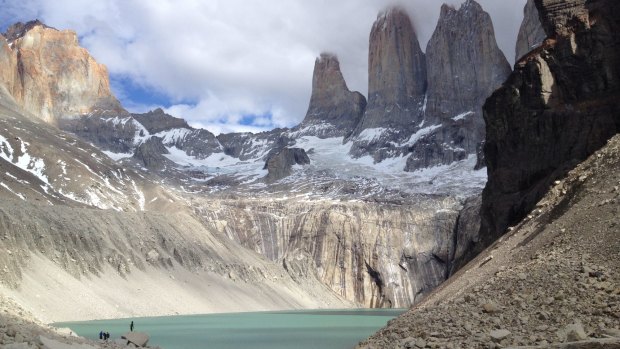
Bucket list item reached: The giant Three Towers of Torres del Paine.Credit: Craig Platt
Our goal is the Three Towers of Torres del Paine National Park in Chilean Patagonia. These three striking granite formations tower above a glacial lake at the apex of a challenging 18km day hike. It's one of the most spectacular sights in all of Patagonia – a place in the wild southern tip of South America, that is filled with them.
Completing one of the world's greatest day hikes has been a goal of mine ever since I first saw a photo of the towers.
The weather is notoriously fickle in Patagonia but we've been extremely lucky – as we've made our way up hills and down into valleys the weather, while occasionally cool, has progressively improved.
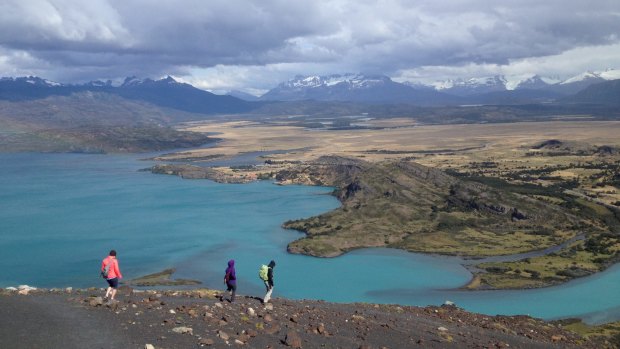
Another of the region's hikes offers spectacular views of Lago del Toro and the Paine River.Credit: Craig Platt
This last stretch, which involves ascending along a path of loose rocks, is done in brilliant sunshine. I'm grateful, as this seems like it would be almost impossible in wet or windy conditions.
And wind is not something they're short of down here.
The 4½-hour drive from Punta Arenas, a small city south of the national park, is bleak. The land is flat with howling winds. The small trees are bent from the constant barrage. You can see for miles in every direction, but there's nothing to see. Just grass, shrubs and the occasional sheep – but this in itself has its own beauty, this vast, bleak space where the bright blue sky fills 90 per cent of your field of vision.
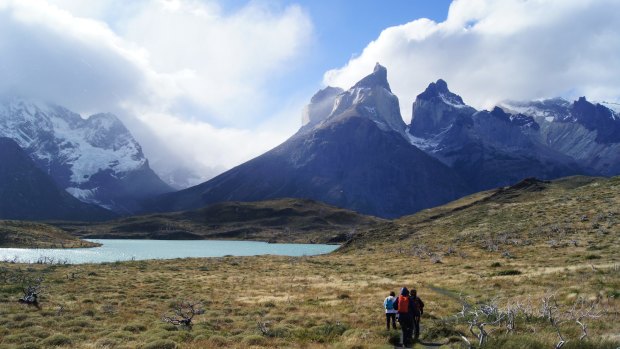
The Cuernos del Diablo (Devil's Horns).Credit: Craig Platt
It remains this way for a couple of hours, then hills and dark clouds loom ahead. One small, steep hill rises. The road detours around it and there behind, through the low cloud and rain lies Torres del Paine. The first low mountain we see is capped with snow and even inside our climate-controlled van I can feel the temperature drop.
The plains give way to hills and valleys and the road threads its way between them. The landscape is so vast, you can see the clouds and the shadows they cast in their entirety.We slow as a large bird of prey flies into view. "Condor," says the driver pointing at the aerial giant. We soon pull over when we realise the sky is filled with them. They glide and swoop above a rocky hill, occasionally coming close to the ground, but never landing. The Chilean-born Canadian with us says there must be a carcass nearby that has attracted them.
Moving on, we reach our destination – the Tierra Patagonia, a luxurious lodge set just outside the national park, featuring spectacular views of the jagged peaks of Torres del Paine (see gallery above).
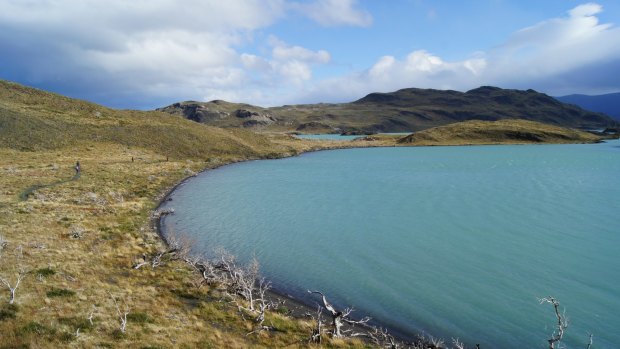
The stark beauty of Lake Nordenskjold.Credit: Craig Platt
The hotel offers a wide range of included tours, complete with guides, with varying levels of difficulty. With my afternoon still free, I take the opportunity for a short hike out to the Cuernos del Diablo (Devil's Horns) – a pair of sharp peaks that jut above Lake Nordenskjold. It's an easy hike of just 4km, made more challenging by a wind that picks up and almost knocks me down. I've never felt anything quite like it. Closer to the lake, we find ourselves doused in spray as the wind gathers up water from the surface. Even taking photos is difficult as I have trouble holding my camera steady.
But the real attraction for me is the three towers in the heart of the park. Ever since first seeing a photo of this awesome location, I've wanted to come here. I'm wary about getting my hopes up though – the changeable weather means that some people come all this way and never reach the towers, with hikes cancelled or forced to turn back by terrible winds and rain.
Having caught a taste of what these winds can be like, I'm hoping for good luck and fair weather.
And we get it. The last scramble up loose rocks is not easy, even in fine weather, but eventually our group from the Tierra make it to the shores of the lake beneath the towers. I'm the youngest guest so it's pleasing to see that no one has given up – even the older retirees among us.
We're rewarded with a well-deserved packed lunch and with one of the most beautiful natural sights I've seen. The emerald, glacier-fed lake is dwarfed by the granite peaks rising like something from The Lord of the Rings behind it. The clouds sweep over the three towers, occasionally breaking to give us a brief glimpse of the very tops of the structures.
We spend an hour or so up here, drinking in the scenery. But even with the sun shining, it's cold, and before our body temperatures drop too much we start the hike back. As we take the treacherous path back down along the loose rocks, I can't help but keep stopping to take a look back at the three towers, still visible, and feel both a mix of satisfaction and sadness that another bucket list destination has been crossed off my list.
The wildlife of wild Patagonia
Scenery isn't all Torres del Paine has to offer. Visitors should keep their eyes peeled for wildlife on their hikes and drives through the park.
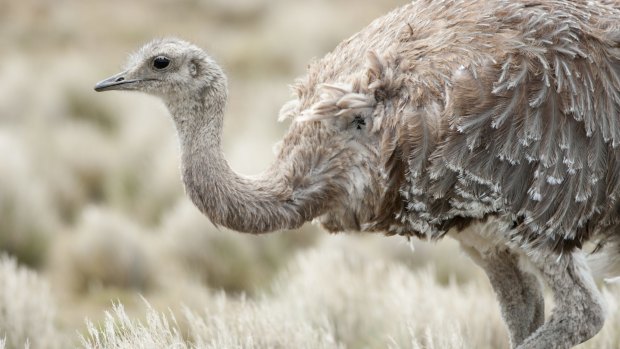
Credit: iStock
Rheas: When we first passed one of these birds on the road to the national park, I thought I'd imagined it. After all, I wasn't expecting to see an emu deep in South America. But this is close to what rias look like – flightless birds very similar to emus, but significantly smaller (standing about 170cm)
Armadillos: We spotted three of these bizarre creatures near the car park on the hike to the Horns. The armoured creatures resemble a large rat wearing a turtle shell.
Pumas: Although not fortunate enough to spot them myself, these huge wildcats were present in the area and other guests managed to spot a mother with two cubs.
Flamingoes: Some of the lakes in the park are favoured by these beautiful birds, which strut the shoreline in long lines while seeking food.
Guanacos: These large animals, similar to llamas and alpacas, are very common in the park and can be seen in herds grazing by the roads.
Trip notes
Getting there
LAN flies from Sydney to Santiago via Auckland with connections to Punta Arenas in Patagonia. Tierra Patagonia can transfer guests from the airport. See lan.com.
Staying there
Rooms at the Tierra Patagonia start from $US2250 ($3200) for three nights, double occupancy, including breakfast, lunch and dinner, an open bar and daily guided excursions into the national park, as well as transfers.
See tierrahotels.com for more details.
Read Traveller's review of the Tierra Patagonia.
Touring there
The South America Travel Centre can create tailor-made itineraries including accommodation, transfers, activities and domestic travel across the continent. See southamericatravelcentre.com.au
The writer travelled as a guest of the South America Travel Centre and LAN.
See also: The world's best walks you can do in a day
See also: The pinnacle of all hikes, for beginners
Sign up for the Traveller Deals newsletter
Get exclusive travel deals delivered straight to your inbox. Sign up now.